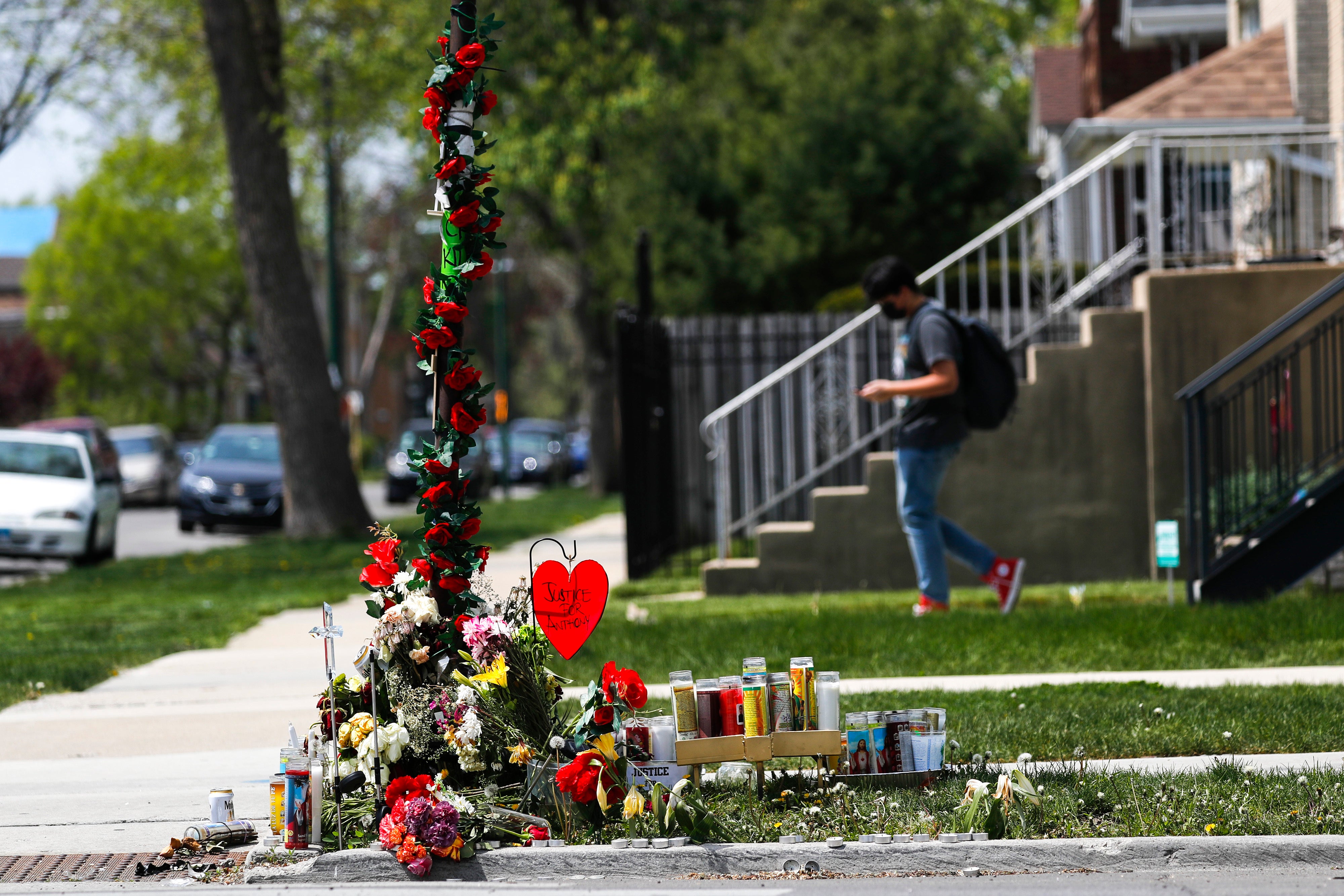Questions and anger over Chicago's lack of foot chase policy
Chicago's scramble to create a police foot pursuit policy following the recent fatal shootings of two people by officers has raised questions about why one wasn't already in place

Your support helps us to tell the story
From reproductive rights to climate change to Big Tech, The Independent is on the ground when the story is developing. Whether it's investigating the financials of Elon Musk's pro-Trump PAC or producing our latest documentary, 'The A Word', which shines a light on the American women fighting for reproductive rights, we know how important it is to parse out the facts from the messaging.
At such a critical moment in US history, we need reporters on the ground. Your donation allows us to keep sending journalists to speak to both sides of the story.
The Independent is trusted by Americans across the entire political spectrum. And unlike many other quality news outlets, we choose not to lock Americans out of our reporting and analysis with paywalls. We believe quality journalism should be available to everyone, paid for by those who can afford it.
Your support makes all the difference.The Chicago Police Department was well aware of how dangerous foot chases could be long before officers shot and killed two people who had run away from them late last month. It also knew how important it was to have a written policy for what officers should and shouldn't do in such situations.
Four years after the Department of Justice issued a scathing report saying too many Chicago police chases were unnecessary or ended with officers shooting people they didn't need to and two years after a judge signed off on a consent decree requiring the department to adopt a foot pursuit policy, it still doesn't have one.
As the department scrambles to comply with Mayor Lori Lightfoot s order to draft an interim foot pursuit policy before summer begins, questions remain about why it has taken so long to do what many other large law enforcement agencies have already done, including the Los Angeles Sheriff’s Department and the police department in Portland, Oregon
Before she was elected mayor, Lightfoot was quoted after the release of video of a fatal police shooting that the footage underscored “the urgency” to adopt a foot pursuit policy and that the department shouldn't wait until the 2021 deadline to do so under the consent decree.
For proof of the need for a policy, one need only look to a report by an independent monitor of the decree, which found that from March 2020 through the end of that year, there were 1,300 police foot pursuits, including 382 that involved an officer using force. Not only that, but the Chicago Tribune reported five years ago that a third of the city's police shootings from 2010 through 2015 that resulted in someone being wounded or killed started with foot pursuits. That report also underscored the dangers of foot chases, from the risk of officers, suspects and bystanders being shot to the non-gun-related injuries that can happen.
Jonathan Smith an attorney and former section chief of the Justice Department’s Civil Rights Division who served as a consultant on the consent decree, said one of the reasons Chicago doesn't have a foot pursuit policy is that police departments are reluctant to make changes until they must.
“Sometimes it takes incidents like these to see the cost of noncompliance,” said Smith, referring to the fatal police shootings of 13-year-old Adam Toledo on March 29 and of 22-year-old Anthony Alvarez two days later.
Christy Lopez, a Georgetown University law professor who led the Justice Department’s probe of the city’s police force following the police killing of Black teenager Laquan McDonald, said it isn't that surprising that Chicago doesn't have a foot pursuit policy because most agencies don't.
“On the other hand, they were told several years ago that this is a problem and it’s dangerous,” she said.
Since the deaths of Toledo and Alvarez, who video shows were holding handguns right before or as officers shot them, Lightfoot has said it's “way past time” for the police department to act on a pursuit policy. Her office didn't respond to requests for comment about why a policy hadn't already been put in place, but according to the Chicago Sun-Times, she recently said, "Unfortunately, the final version of the consent decree, put this issue off for several years.”
Craig Futterman, a University of Chicago law professor who has extensively studied the police department and its use of force, said there is nothing in the decree that has prevented Lightfoot or the department from creating a policy.
“The only reason why there isn’t one (a policy) in place is because the mayor and the police department have refused to act,” he said.
Robert Boik, who is heading the department’s effort to comply with the consent decree, said it isn't true that the department has been dragging its heels on the issue.
“We are meeting the deadlines,” said Boik, the department's executive director for constitutional policing and reform. “We aren't waiting to be told what to do.”
He pointed out that the order to create a foot pursuit policy as part of the consent decree was only issued in early March, and that the department has already followed the decree's directive to create a training bulletin for officers and has seen to it that the vast majority of officers have studied it.
He said the department is on pace to have a temporary policy in place to meet the mayor's deadline of the start of summer and to have a permanent policy by September, after the original July 1 deadline was extended because of the coronavirus pandemic.